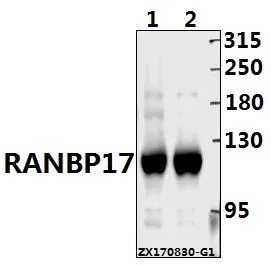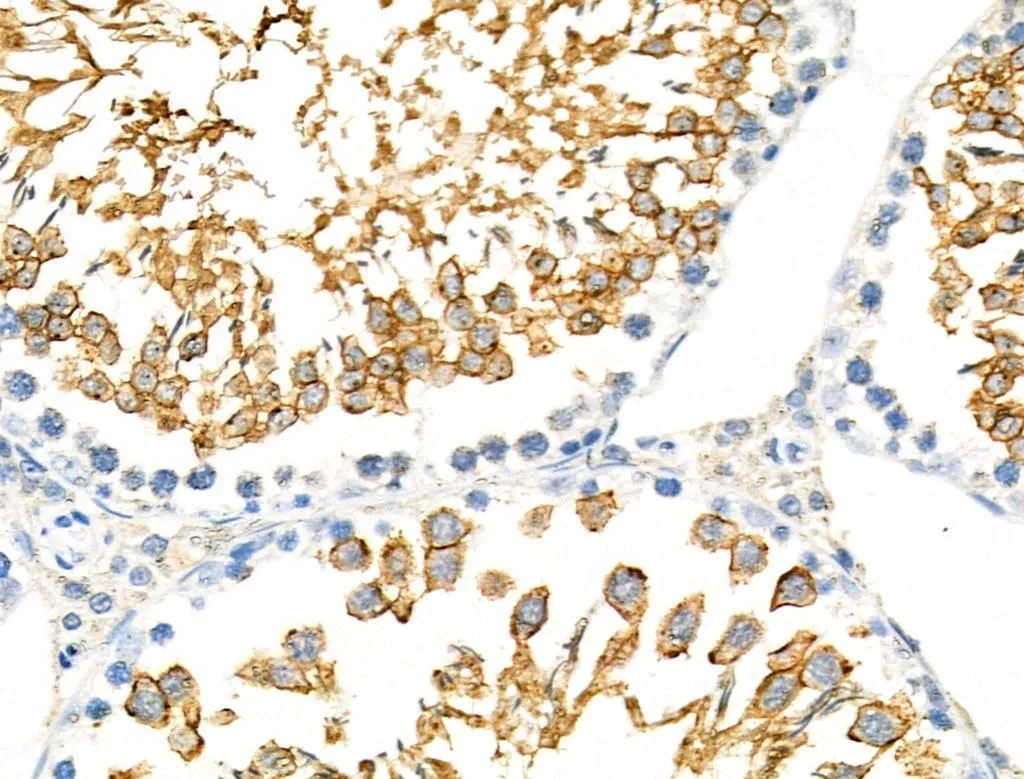
WB analysis of various samples using GTX66825 RanBP17 antibody. Lane1 : The Testis tissue lysate of Rat(40ug) Lane2 : The Testis tissue lysate of Mouse(40ug) Dilution : 1:500
RanBP17 antibody
GTX66825
ApplicationsWestern Blot
Product group Antibodies
TargetRANBP17
Overview
- SupplierGeneTex
- Product NameRanBP17 antibody
- Delivery Days Customer9
- Application Supplier NoteWB: 1:500-1:1000. *Optimal dilutions/concentrations should be determined by the researcher.Not tested in other applications.
- ApplicationsWestern Blot
- CertificationResearch Use Only
- ClonalityPolyclonal
- Concentration1 mg/ml
- ConjugateUnconjugated
- Gene ID64901
- Target nameRANBP17
- Target descriptionRAN binding protein 17
- Target synonymsran-binding protein 17
- HostRabbit
- IsotypeIgG
- Protein IDQ9H2T7
- Protein NameRan-binding protein 17
- Scientific DescriptionThe transport of protein and large RNAs through the nuclear pore complexes (NPC) is an energy-dependent and regulated process. The import of proteins with a nuclear localization signal (NLS) is accomplished by recognition of one or more clusters of basic amino acids by the importin-alpha/beta complex; see MIM 600685 and MIM 602738. The small GTPase RAN (MIM 601179) plays a key role in NLS-dependent protein import. RAN-binding protein-17 is a member of the importin-beta superfamily of nuclear transport receptors.[supplied by OMIM, Jul 2002]
- Storage Instruction-20°C or -80°C,2°C to 8°C
- UNSPSC12352203



